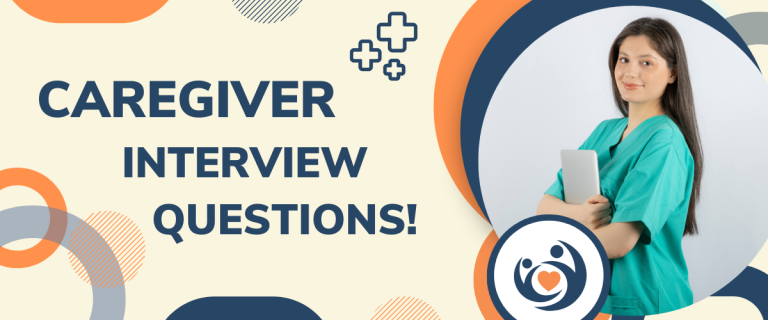Are you a B2B marketer confused about which platform to use for your advertising needs? With so many options available, it’s easy to get lost in the choices. But fear not! In this blog post, we’ll compare two of the most popular platforms: LinkedIn Ads and Facebook Ads. We will help you determine which one is best suited for your B2B marketing strategy based on their features, targeting capabilities, cost-effectiveness, and overall effectiveness. So sit tight and let’s dive into the battle of LinkedIn Ads vs Facebook Ads!
Introduction to B2B Marketing and Social Media Platforms
B2B marketing is the process of promoting a company’s products or services to other businesses. LinkedIn Ads and Facebook Ads are two popular social media platforms that can be used for B2B marketing.
When it comes to choosing between LinkedIn Ads and Facebook Ads, there are a few things to consider. LinkedIn Ads is more expensive than Facebook Ads, but it can be more effective in reaching decision-makers at businesses. LinkedIn Ads also offers more targeting options than Facebook Ads.
Facebook Ads is less expensive than LinkedIn Ads and may be more effective in reaching a wider audience. However, Facebook Ads does not offer as many targeting options as LinkedIn Ads.
Both LinkedIn Ads and Facebook have their own pros and cons, so it’s important to consider what your goals are before deciding which platform to use for your B2B marketing campaign.
Advantages and Disadvantages of LinkedIn Ads vs Facebook Ads
When it comes to LinkedIn Ads vs Facebook Ads, there are pros and cons to both platforms. Here’s a breakdown of the advantages and disadvantages of each:
LinkedIn Ads
Advantages:
– LinkedIn has over 500 million users, making it a large potential market for businesses.
– LinkedIn is a business-focused social platform, so users are more likely to be in a professional mindset when using the site. This makes LinkedIn ads more effective for B2B marketing than Facebook ads.
– LinkedIn users have higher incomes than the average social media user, making them more valuable as customers.
– LinkedIn allows businesses to target their ads based on factors like job title, company size, and location. This makes it easier to reach your target audience with your ad campaigns.
– LinkedIn ads are less expensive than Facebook ads on average.
Disadvantages:
– LinkedIn has fewer active users than Facebook, so your potential reach is smaller.
– The targeting options on LinkedIn are not as robust as those on Facebook. For example, you can’t target by interests or demographics like you can on Facebook.
– Because LinkedIn is a business-focused platform, it can be difficult to stand out from the competition with your ads.
Facebook Ads:
Advantages: – With over 2 billion monthly active users, Facebook has a much larger potential reach than LinkedIn. – Facebook offers more targeting options
Understanding the Different Types of Ads in Each Platform
There are three types of LinkedIn Ads: Sponsored Content, Sponsored InMail, and Text Ads. Facebook Ads come in four types: Boosted Posts, Page Likes, Website Clicks, and App Installs.
Sponsored content is a native ad that appears in the middle of your LinkedIn feed. It looks like any other piece of content on LinkedIn, except it has an “Sponsored” label above the title. This type of ad is best for promoting blog articles or other pieces of long-form content.
Sponsored InMail is a message that you can send directly to another LinkedIn user’s inbox. These messages can only be sent to users who are not already connected to you on LinkedIn. This type of ad is best for promoting time-sensitive offers or events.
Text ads are the simplest type of LinkedIn Ad. They consist of a headline, description, and URL, and they appear in the sidebar on desktop devices or in the newsfeed on mobile devices. Text ads are best for promoting products or services with a strong call-to-action.
Boosted posts are regular Facebook posts that have been given a boost by being shown to more people than usual. When you create a boosted post, you can choose your target audience, budget, and duration. Boosted posts are best for promoting blog articles or other pieces of long-form content.
Page likes ads are designed to get more people to like your Facebook Page. You can
Targeting Options Available on LinkedIn and Facebook
There are a few different targeting options available on LinkedIn and Facebook. LinkedIn allows you to target by job title, company size, or industry. Facebook allows you to target by interests, behaviors, or demographics.
Both platforms have their own unique advantages. LinkedIn is great for targeting professionals in a specific industry or those who work at a certain company size. Facebook is great for targeting people based on their interests or behaviors.
So, which one is best for BB marketing? It really depends on your goals and objectives. If you want to reach a professional audience, then LinkedIn would be the better platform. If you want to reach a more general audience, then Facebook would be the better platform.
Key Performance Indicators for Evaluating Campaign Success
There are a few key performance indicators (KPIs) you can use to evaluate the success of your LinkedIn Ads campaign:
1. Cost per lead: This measures how much it costs you to generate a new lead through your LinkedIn Ads campaign. A lower cost per lead indicates a more successful campaign.
2. Click-through rate (CTR): This measures how often people who see your ad click on it. A higher CTR indicates a more successful campaign.
3. Conversion rate: This measures how often people who click on your ad go on to make a purchase or take some other desired action. A higher conversion rate indicates a more successful campaign.
4. Return on investment (ROI): This measures how much money you make from your LinkedIn Ads campaign, relative to how much you spend on it. A higher ROI indicates a more successful campaign.
Tips for Optimizing Your B2B Ad Campaigns on LinkedIn and Facebook
As the world of digital marketing continues to evolve, so do the best practices for optimizing your ad campaigns. If you’re running B2B ad campaigns on LinkedIn and Facebook, there are a few key tips you can follow to help ensure your campaigns are as effective as possible.
First, it’s important to segment your audience according to each platform. LinkedIn is known for being a more business-focused social network, so your ad targeting should reflect that. Facebook, on the other hand, is used by people for both personal and business purposes, so you’ll want to make sure your ads are relevant to both audiences.
Second, take advantage of each platform’s unique features. LinkedIn offers advanced targeting options that allow you to target specific job titles or companies. Facebook, on the other hand, offers powerful tools for creating visually-appealing ads that can capture attention in the News Feed.
Finally, keep an eye on your metrics and adjust accordingly. Both LinkedIn and Facebook offer insights into how your ads are performing, so use those insights to inform your future campaign decisions. By following these tips, you can optimize your B2B ad campaigns on both LinkedIn and Facebook for maximum effectiveness.
Conclusion
In conclusion, it’s clear that LinkedIn Ads and Facebook Ads both provide great opportunities for B2B marketers. However, before committing to either platform, it is important to assess the specific goals of your business and carefully consider which platform can help you reach them most effectively. With the right combination of research and strategy, leveraging either or both of these powerful ad platforms can be a great way to drive growth for any B2B business.






